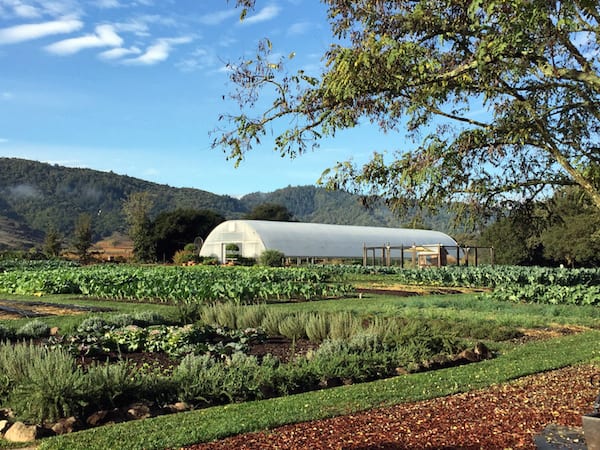Wines of the Aosta Valley: Come Sip and Savor

Wine has always played a dominant role in Italian cuisine and culture—although the regions of this thoroughly wine-centric country vary widely in terms of terroirs and traditions.
Aosta Valley, the smallest of the 20 regions, is sandwiched in the northwestern corner between France, Switzerland, and Piedmont. Its diminutive size, high-altitude topography, and alpine climate combine to make it the smallest wine appellation in Italy.
Surrounded by towering mountain peaks, it is, without doubt, the most mountainous region in the country and, along with Sicily, one of the driest wine regions.
“The particular climatic conditions of the Aosta Valley – together with the characteristics of the land and its exposure, position, and slope – have certainly not made life easy for winemakers,” notes the official Valle d’Aosta tourism website.
Visiting the vineyards and wine cellars of Aosta with Le Petit Tour

The new MHz Choice food travel series, Le Petit Tour, showcases the determined and talented winemakers who—despite daunting challenges—produce high-quality DOC (denominazione di origine controllata) wines.
Like the delectable cheeses and cured meats of the region, the grapes, wines, and winemakers have strong historic and cultural links to their “cousins” in nearby France and Switzerland.
Until the 1970s, Aosta Valley wines were primarily intended for family consumption, built upon traditions passed down from one generation to another. Over the years, however, these small producers turned their focus to quality.
Where there is a will, there is a way

Viewers of Le Petit Tour will discover that the fresh mountain air, cold winters, and cool summers of this Alpine environment are actually conducive to the growth of certain native grapes, ones that produce wines with a distinctive character and flavors.
Abundant mountains serve to protect the vineyards from excessive winds. The wines taste fresh, especially when they are young.
Some 230,000 cases of wine were produced in Aosta in 2020 from grapes on 1,170 acres of vineyards.
A January 2021 article in The New York Times by wine critic Eric Asimov singled out Grosjean Vallée d’Aoste Torrette 2019 as one of 20 wines around the world offering good value (priced at under $20 a bottle) while being able to “convey the flavors of the places that produced them.” For those who haven’t had the opportunity to taste the wines of the Aosta Valley, this red wine may be an affordable and accessible introduction.
Valle d’Aosta DOC
In 1985, the government established a single DOC (called Valle d’Aosta. in Italian and Vallée d’Aoste, in French). From a branding perspective, this helped focus regional efforts and avoid fragmentation among producers.
But within the DOC, there are seven sub-denominations. (The region has no DOCG or IGT/P appellations). These “micro-terroirs” create variety in grape-growing, based on differences in soils, altitudes and sun exposure.
According to Italian Wine Central, a comprehensive English-language source of information about Italian wines, about 60% of the Aosta region’s production is red. Among the 15 grape varieties, the primary ones are Petit Rouge (20%), Nebbiolo (12%), Pinot Nero (8%), Prié Blanc (8%), and Fumin (7%).
Two widely grown grapes in this region are Petit Rouge and Prié Blanc.
“The best-known wine in the Aosta Valley is Torette, made from Petit Rouge grapes,” says Mathieu Champretavy, the host of Le Petit Tour, who is a trained sommelier.

Petit Rouge grapes are small and dark, with a dusty gray hue. These red wine grapes are the most common in the region and are sometimes compared to Beaujolais. The grapes ripen during the hot, dry summer months.
They are primarily used in DOC blends like Chambave Rouge, Enfer d’Arvier, Nus Rouge and Torrette, to which they add floral notes and color, but the grapes are also used to produce varietal wines.
Prié Blanc grapes, one of the oldest varieties in the Aosta Valley, are grown here almost exclusively. These hardy grapes are resistant to frost, well-suited to thrive in low temperatures and altitudes as high as 3900 feet above sea level. Light-skinned in color, they share a genetic link with other grapes in the region.

These grapes are usually grown in low pergola systems close to the ground so they benefit from the heat generated by the soil. Fortunately, the grapes have a short maturation cycle and can be harvested before the snow starts falling in autumn. These grapes are used to produce Blanc de Morgex et de La Salle DOC, a dry, still white wine with a delicate, fruity flavor that is meant to be served chilled.
Take a seat at the table
Visitors to Aosta Valley are able to taste these alpine wines in their terroir at local restaurants, bars and wineries. With limited production, only a small number find their way outside the region and fewer outside the country.
“However, several producers like Gerbelle, Ottin, Les Cretes, Cave des Onze Communes, and Cave du Mont Blanc export our Aosta Valley wines,” says Champretavy. “They may not be easy to find at your local store.”
Describing these mountain wines in a D’Aosta Valley Wine Guide on GreatItalianChefs.com, sommelier and Italian wine expert Marco Rossi notes: “The wines produced today are still elegant mountain wines, perfectly reflecting the beauty of the stunning landscapes and colors of the valley.”
The rocky soil where the grapes are grown truly makes these wines unique. “The mineral taste conquers your palate with every sip,” says Rossi.
The wine episodes of Le Petit Tour
Three episodes on Le Petit Tour showcase the unique wines of the Aosta Valley in Italy and their “cousins” across shared borders.
With Mathieu Champretavy, the host of the series and a knowledgeable sommelier, viewers visit terraced vineyards on sloped mountains, meet family winemakers, sit down in wine cellars and tasting rooms, and visit local wine bars and restaurants.
Episode 2 – Prié Blanc and Rèze
Meet:
- Mauro Jaccod, past president of Cave Mont Blanc and producer of Blanc de Morgex et de La Salle DOC (Prié Blanc grapes) in Aosta Valley, and
- Serge Heymoz, producer of Rèze, a white grape variety often compared to Sherry, at family-owned Cave les Sentes in Valais (Switzerland.
Episode 6 – Donnas AOC and Lessona AOC
Meet:
- Luciano Zoppo Ronzero, producer of Donnas AOC, a red wine made with Nebbiolo grapes, at Piantagrossa in Aosta Valley, and
- Luca De Marchi, a producer of Lessona AOC, a red wine made with Nebbiolo grapes at Proprietà Sperino in Piedmont (Italy)
Episode 7 – Petit Rouge and Humagne Rouge
Meet:
- Didier Gerbelle, producer of Petit Rouge at Didier Gerbelle in Aosta Valley, and
- Gilbert Devayes, producer of Humagne Rouge at Gilbert Devayes in Valais (Switzerland)
Take a sneak peek
How to watch Le Petit Tour
All ten episodes of Le Petit Tour will stream on MHz Choice. Here are the details of a special promotion for More Time To Travel readers who are new subscribers:
- Use promo code LEPETIT21
- Free 7-day trial + 1 free month
- Limited to new mhzchoice.com subscribers only
- Valid in the U.S. & Canada only
- Expires 6/30/21 at 11:59 pm ET
- Promo code cannot be used on Amazon Prime, Cox, Xfinity X1, or The Roku Channel Premium.
Learn more about the wines of the Aosta Valley
The Valle D’Aosta official tourism website profiles the region’s DOC wines and the local wineries that produce them. Also, see the Italian National Tourist Board website.
Disclosure: The author was commissioned to write a series of posts about Le Petit Tour but any opinions expressed in this post are her own.
Previously on More Time to Travel:
- Le Petit Tour: Behind the Scenes of A New Food Travel Series
- Why Chefs and Foodies Fall in Love With Fontina
- How To Create An Aosta Valley Cheese Board
- Savoring the Flavors of the Aosta Valley on Le Petit Tour
- Discover the Aosta Valley: A Unique Corner of Italy
Save to Pinterest!!






